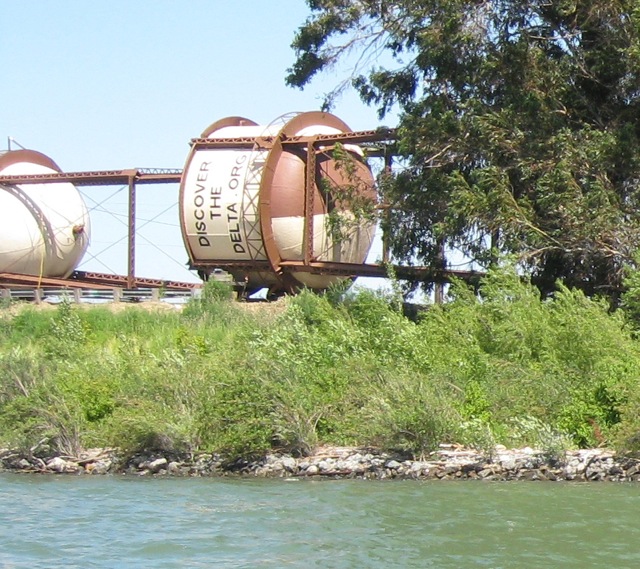John Bass made a great point in a recent comment thread at Delta National Park that highlights one of my frustrations about California water discussions:
[I]f basic facts are contentious, then the problem isn’t facts.
The comment was triggered by a point the California Farm Water Coalition’s Mike Wade made regarding an editorial that ran in the Oakland Tribune. To solve California’s water problems, the Tribune wrote, “sacrifices by water users will have to be made, particularly by agriculture, which uses more than 80 percent of California’s water.” To which Wade replied (in the comments):
The Department of Water Resources identifies water use in California during a normal year as environmental, 48%, agriculture, 41% and urban, 11%.
John’s response:
It may not be that Ag uses 80% of the state’s water, and Mr Wade’s number of 41% may be close to a reasonably accurate percentage of Delta water use by Ag, but only if calculated as the theoretical/ideological total amount of water available to export.
The fact that these discussions get tangled up in numbers, different versions of which serve to frame the issue in very different ways, is unsurprising. That’s the way this game is played. See Sarewitz 2004 for some great case studies of how arguing over numbers is used as a proxy for the real arguments at hand:
[S]cientific uncertainty, which so often occupies a central place in environmental controversies, can be understood not as a lack of scientific understanding but as the lack of coherence among competing scientific understandings, amplified by the various political, cultural, and institutional contexts within which science is carried out.
That it is common doesn’t make it any less unhelpful.


John,
Besides arguing over numbers which may not be well known, there needs to be some better definitions of terms.
My favorite term whose definition needs work is ‘used.’ Water, in contrast to burned coal, does not change form or become something else. It is still water.
So, to me, water that evaporates and becomes a cloud that goes to another state or water that is poured on the ground and takes years to reach the local aquifer is ‘used’ but water that is poured on a field to produce crops that feed locals who then put this water back into the local reservoirs is not ‘used.’
Similarly water that runs down the sewer and makes it into the local reservoir is not used either.
The political debates on water rights would be less frustrating to me if the debaters would start by agreeing on the meanings of the words that they are using. With contradictory word meanings it would seem to be hard to come to a viable conclusion on water usage.
An interesting current article.
http://e360.yale.edu/digest/major_rivers_have_enough_water_to_sustain_growing_populations_study_says/3138/?utm_source=feedburner&utm_medium=feed&utm_campaign=Feed%3A+YaleEnvironment360+%28Yale+Environment+360%29
Wade et al. always say that but it doesn’t change the point — that ag uses most of the water controlled by people (where that 80% comes from). He needs to stop shifting the baseline and engage the issue: water allocation among human uses.
Unfortunately, Wade’s sole MO appears to be obfuscation and stonewalling. I’d LOVE to see FWC (a one man band) convene a meeting on ag water markets, use and efficiency. THAT would be a step forward.
But David, it’s not only about water allocation among human uses (the demand side of the equation). It’s also about the supply side of the equation (how much of the total supply is allocated to human uses). That’s why the 80% / 41% argument is important.
Your ideas for markets address the demand, which is extremely important, but supply should at least be part of the discussion.
It is important to understand what the total supply is in relation to the total human-used supply, and to understand what the non-human uses are and why they exist.